

The Nikon D5300, the latest version of the entry-level camera, on the microscope
Exactly one year after the market introduction of the Nikon D5200, there is already an updated model available, the Nikon D5300. Nikon made use of these twelve months to make quite a few improvements to the camera for hobby photographers. We tested it to see if they had also changed the camera’s suitability for use in microscopy.
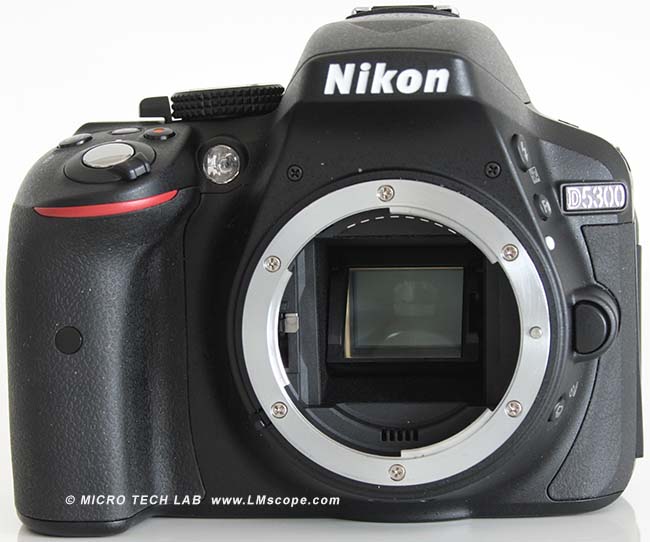
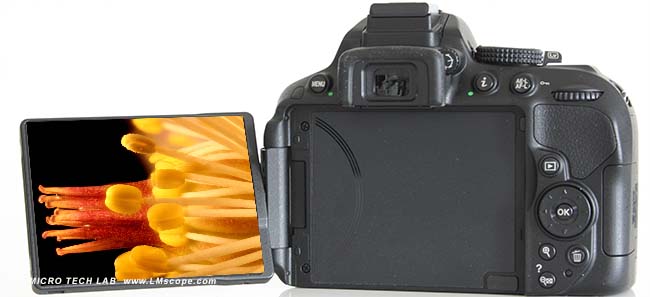
Looked at just from the outside, the Nikon D5300 is a touch smaller and lighter (body: 530 grams) than the previous model, the Nikon D5200. The sensor is still the APS-C size (Nikon Dx 23.5 x 15.6 mm) and has a resolution of 24 megapixels. In comparison with Nikon’s pricier cameras, such as the D7100 and the D610, the build quality of the body is noticeably more minimalistic. In particular, the operation of the buttons is very loud and, to our mind, does not correspond with the level expected of a camera costing around € 660. The comparable model from Canon, the EOS 700D, is significantly quieter when the buttons are pressed, although it only has 18 megapixels and no WLAN function.
The ISO sensitivity can be adjusted automatically from 100 to 12,800; in manual mode, ISO can be expanded to up to 25,600. The colour depth is 36 bits.
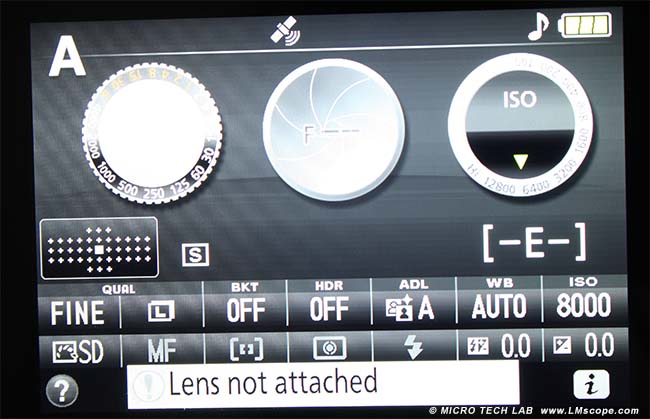
The Nikon D5300 still has a major shortcoming that is characteristic for the cameras in this range: without CPU lenses, the automatic functions are not supported. These have been disabled by Nikon for strategic reasons, which is particularly disappointing for all applications in microscopy, telescopy and for analogue lenses. If lenses without electronics are used, such as our LM digital adapter, then it is only possible to work in M (manual) mode. It goes without saying that this is not very convenient. Incidentally, Nikon only disables these functions in this low-priced range of cameras! In its higher-value models (such as the Nikon D7000, D7100, D610, D600, D800, D810, Df) all automatic functions are available irrespective of the lens used.
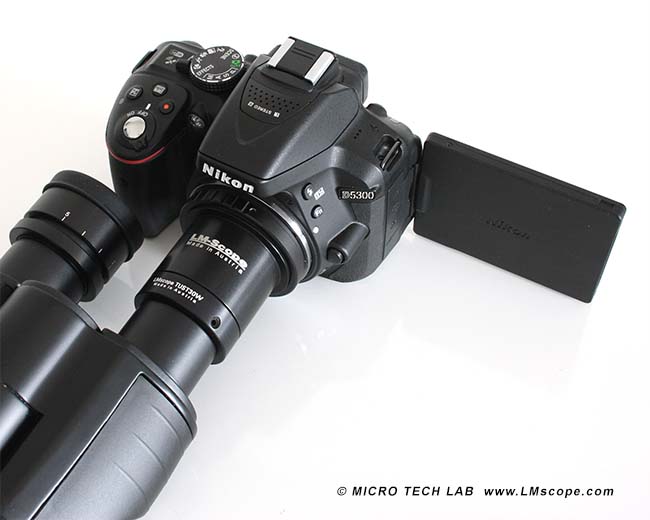
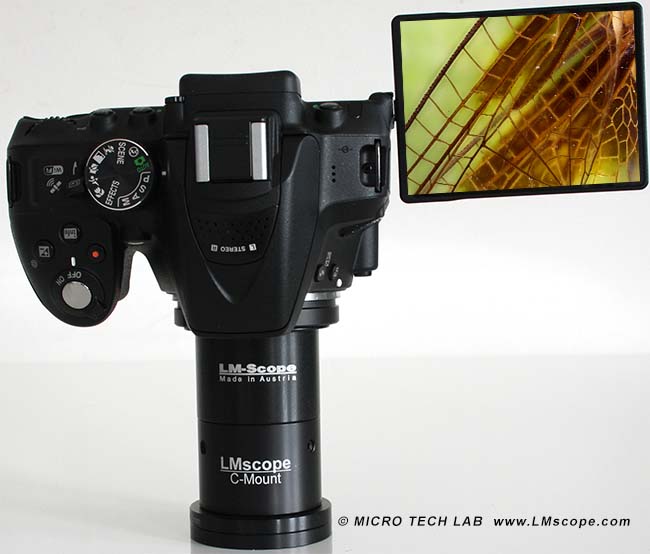
The display is rotatable, which is an advantage over Nikon’s top models, which only have a fixed display.
The image magnifying function also works in Live View mode. In addition, the Nikon D5300 features an HDMI port.
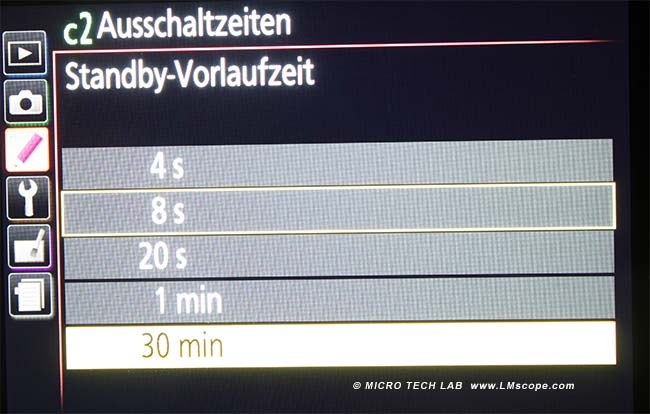
The Live View mode shuts off automatically after a maximum of 30 minutes. This can be annoying in presentations and meetings, as it then needs to be restarted. With the higher-priced Nikon models (e.g. Nikon D4, Nikon D610, Nikon D7100, Nikon Df), the activation time can be set to unlimited. If you often work in Live View mode, then it is essential to buy an external power supply, as the battery runs down very quickly.
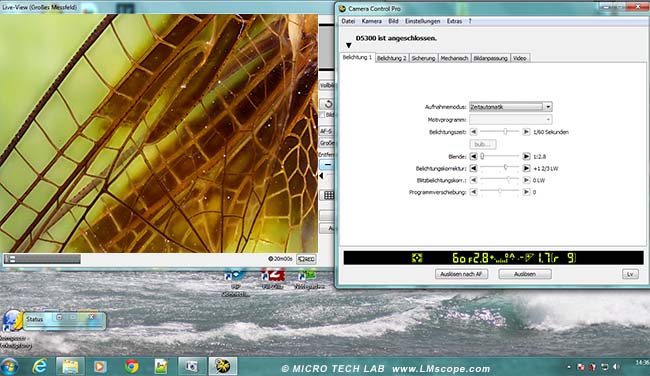
The Nikon D5300 can also be controlled from the computer using the Nikon Camera Control Pro 2 software. As with all Nikon models, it works perfectly. The software must be purchased separately.
Conclusion:The camera per se is very satisfactory, and the moveable display is an advantage. The sensor is also of good quality and has been improved in comparison with the previous model. However, for use in microscopy the camera is not well suited due to Nikon's disabling all automatic functions when not using original Nikon lenses.
update: 30.09.2015
New LM Digital Adapter for: Nikon Z8 / Nikon D6 / Nikon Z6 / Nikon Z6II / Nikon Z7 / Nikon Z7II / Nikon Z5 / Nikon Z50 / Nikon Z30 / Nikon Z fc / Nikon D850 / Nikon D780 / Nikon D5 / Nikon D4s / Nikon D4 / Nikon D750 / Nikon D500 / Nikon D810 / Nikon D800 / Nikon D800E / Nikon Df / Nikon D610 / Nikon D600 / Nikon D7200 / Nikon DS-Qi2 (Microscope Camera) / Nikon D3x / Nikon D3S / Nikon D7100 / Nikon D7000 / Nikon DS-Ri2 (Microscope Camera) /